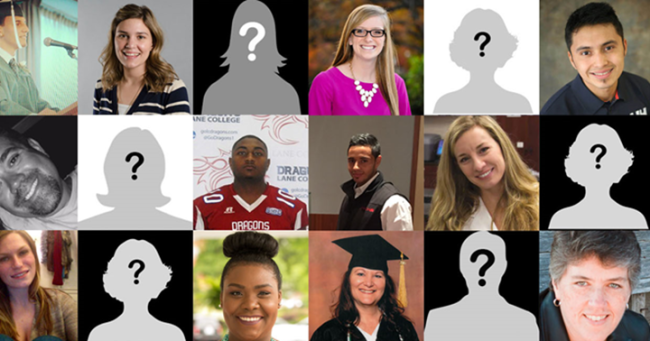You have /5 articles left.
Sign up for a free account or log in.

The Student Achievement Measure
After two years at the University of Richmond, Susannah Haisley felt her education was getting too expensive. So she transferred to Clemson University, in her home state of South Carolina, with a generous scholarship package.
She graduates on Saturday. But in federal databases, her diploma will not count.
The federal graduation rate includes only first-time, full-time students. More than half of all bachelor’s degree recipients attend more than one college, and millions of students who transferred or enrolled part time are excluded every year.
“I've done everything just like a normal student has,” Haisley said. “I just don't understand why I wouldn't be counted.”
Now, as graduation season approaches, an initiative led by several major higher education groups wants to put faces to the statistics. A new campaign, called #CountAllStudents, will compile stories of students like Haisley -- those who are set to graduate in 2016 but aren’t counted in federal data.
Critics argue that the federal data misrepresent colleges’ success rates and favor some colleges over others. Institutions with traditional students -- just out of high school, studying full time, planning to stay in one place -- are at an advantage.
Right now, the federal data are widely accepted: prospective students use federal graduation rates during the college search. Policy makers use the data to make judgments about colleges’ performance, and institutions use the data to guide their own policies.
“If they aren't able to use the accurate metrics, they won’t really have any idea if their rates for transfer students are better than their peer institutions,” said Christine Keller, executive director of the Student Achievement Measure, which is coordinating #CountAllStudents.
A few years ago, the six major groups that represent college and university presidents created the Student Achievement Measure as an alternative to the federal graduation rate. For colleges that participate, the Student Achievement Measure tracks full-time, part-time and transfer students, and captures the outcomes of an additional 600,000 students compared to the federal graduation rate each year.
Now, the idea is to make a point through stories, rather than numbers. Instead of listing the statistics, #CountAllStudents includes names, photographs, career goals.
“It's not just a data conversation,” said Keller, who is also a vice president at the Association of Public and Land-grant Universities, which is one of the groups behind the Student Achievement Measure. “These are real transfer students and real part-time students. We want to connect the need for better metrics with the students who are not being counted.”
There’s Crystal Hagerman, a transfer student and business management major at Doane University, who plans to get a master’s in leadership or project management. There’s Demian Brunty, who started working toward a degree in 1997, put his education on hold and will graduate next week from Indiana University Northwest. These students’ diplomas don’t mean anything less, the higher ed groups argue, and their stories deserve to be told.
But in the meantime, the data are getting less valuable by the day, because student demographics are changing, and more nontraditional students are pursuing degrees. When the federal graduation rate’s methodology was created, back in the ’90s, greater proportions of students followed a traditional path.
“At that point,” Keller said, “the federal graduation rate was a more accurate representation of the students attending our campuses.”
Right now, nearly 600 colleges participate in the Student Achievement Measure. Most of those are four-year publics, while an additional 81 are two-year publics and 56 are four-year private nonprofits. Participation is voluntary -- but if all institutions used the tool, nearly two million students that the federal graduation rate excludes would be counted.
But individual stories are personal, and many nontraditional graduates have had to navigate more obstacles along the way, Keller said. After reading students’ stories, she hopes colleges will be more motivated to sign up. “When you start tying the need for better metrics to real, live students who have graduated,” she said, “I think that can only help.”








